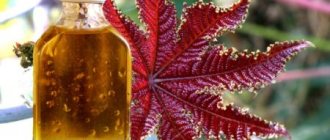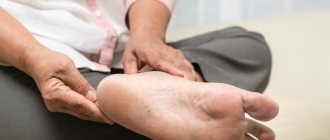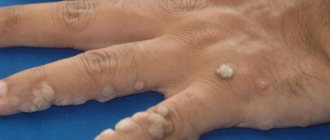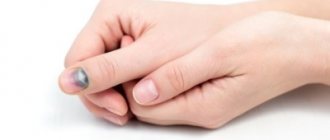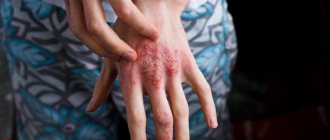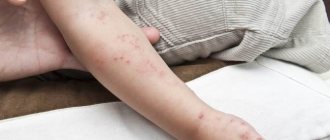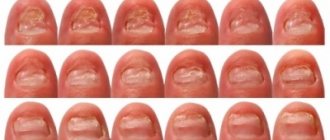How to minimize the risks of roughness and cracking
Rough, cracked hand skin is not only a discomfort, but also a lack of aesthetics. This is especially important for women. Well-groomed hands with a beautiful stylish manicure add femininity. It is from them that one can determine the real age of a representative of the fair half of humanity. Proper hygiene will help minimize the risk of dry skin and cracks.
It is important to dry your hands well after washing. Evaporation of excess moisture leads to dry skin. After prolonged contact with water (washing dishes, washing floors, taking a bath, showering, swimming in a pool, natural reservoirs), it is better to use nourishing plant-based moisturizers.
If the work involves constant contact with oils and dirt, it is advisable to wear rubber and fabric gloves. This way you can protect the skin of your hands from excessive pollution and pathogenic flora.
It is recommended to use special rubber gloves at home. It is better to avoid contact of the skin of your hands with washing powders, detergents and cleaning chemicals.
They not only cause dry skin on the hands and contribute to the appearance of cracks, but also cause allergic reactions and eczema.
About the reasons
It is worth noting that this problem can be short-term or present for a long time.
Let's consider the provoking factors:
- Roughness is a consequence of weather conditions , for example, cold with wind or heat.
- If immunity is reduced , this will affect the skin, including dryness, tightness, and roughness. This is especially true in winter with vitamin deficiency.
- If the skin does not receive proper care (peels, creams, lotions), it dries out without long-term hydration.
- Lack of moisture can affect the condition of the epidermis (for example, you don't drink enough water). Soups, vegetables and fruits, tea and coffee will also help solve the problem.
- Hereditary predisposition plays an important role in this problem.
- With a long diet, the body is able to react in a similar way. The necessary nutrients do not get into the cells, so the skin begins to peel off.
- The cause of rough hand skin can be incorrectly selected skincare products .
- Perhaps slow metabolic processes . Cells do not receive nutrients in the required quantities, which causes the skin to tighten and peel.
- If you used cleaning products when washing dishes or other surfaces without protecting your hands with gloves , then roughness may subsequently occur.
- Sometimes this problem is even associated with irritation from fabrics and towels .
- Or, on the contrary, you don’t dry yourself enough after taking a bath .
- Dry hand skin can be caused by allergies or psoriasis .
- Sometimes roughness and tightness are symptoms of pellagra , a disease in which the body lacks the required amount of nicotinic acid. A person is susceptible to this disease between the ages of twenty and fifty. To recognize this disease and distinguish it from temporary roughness of the hands, you should pay attention to the presence of other accompanying symptoms.
With pellagra, a person often wants to sleep, gets tired quickly, eats little, often gets nervous, the tongue becomes covered with red spots, erosive formations appear on the mucous membranes, the skin not only becomes dry, but also cracks and blisters. If you find all these signs, you need to consult a doctor so that he can prescribe the appropriate treatment.
Features of treatment
Before starting treatment, it is worth identifying the causes of dryness and cracks. With prolonged exposure to wind and frost, these problems may arise. The solution is simple. Avoid contact with aggressive environments and wear gloves.
In this case it will help:
- fatty baby cream with vitamin “A”;
- compresses with vegetable oils;
- honey applications.
It is important to immediately take measures to eliminate cracks.
Otherwise, they can lead to complications:
- premature aging;
- infection with scabies, lichen, and other infections;
- coarsening;
- the appearance of wrinkles;
- unpleasant pain;
- discomfort.
What to do
There are also many reasons and ways to combat peeling hands. Depending on why the skin on the palms and fingers peels and cracks, it is worth choosing a method. However, not all methods are equally effective for everyone.
First of all, it is worth understanding the cause of peeling by analyzing recent actions and eliminating all contact causes (allergens, soaps, chemicals). You should also treat the skin of your hands with a nourishing cream. You can use bepanten, as it has good healing properties.
Causes of cracks
The reasons for the appearance of cracks are different. The epidermis is the main indicator of the occurrence of health problems.
Cracks on the fingers indicate:
- Menopause. All women over 50 years old face the problem of dry skin. At this age, hormonal changes occur, leading to deterioration of ovarian function and disruption of the production of glycosaminoglycans. This is the main reason for the decrease in collagen synthesis (the main component of elastic and healthy skin).
- Fungal infection. Parasitic microorganisms destroy the nail plates and damage the skin. Symptoms of the disease: severe itching, peeling, deep wounds.
- Eczema. The disease can become chronic. Eczema occurs in both adults and children. Small blisters appear on the skin, causing itching. Scratching causes cracks to form. The disease is characterized by seasonality and hereditary predisposition. Stress, allergic reactions, problems with the gastrointestinal tract, and liver malfunctions lead to the appearance of eczema.
- Psoriasis. Manifestations of the disease: red, excessively dry spots raised above the surface of the epidermis (foci of inflammation). People aged 15-25 years are at risk.
- Diabetes mellitus. Refers to endocrine diseases. It is characterized by a lack of the hormone insulin, a violation of carbohydrate, mineral, water-salt, fat, protein metabolism, and a chronic course. The prevalence of the disease among the population is 1-8.6%, cases in children, 0.1-0.3% in young people. The risk factor for diabetes mellitus is genetic predisposition.
- Vitamin deficiency. Leads to peeling and dry skin on the hands and face, dizziness, nausea, and headaches. Causes of the disease: improper malnutrition, intestinal dysbiosis, disruptions in the gastrointestinal tract.
Unfavorable factors leading to the problem:
- use of low-quality or expired cosmetics;
- washing hands in very cold water;
- frequent swimming in a pool with chlorinated water;
- direct contact with household chemicals;
- sudden changes in temperature;
- low air humidity;
- influence of ultraviolet radiation;
- frost, cold and wind.
If, after excluding unfavorable factors and proper hand care, the problem cannot be solved, you should consult a doctor. A dermatologist, endocrinologist, and also a cosmetologist will help. The problem can be eliminated only after appropriate treatment.
What causes peeling of the epidermis on the hands
The reasons for the appearance of peeling skin on the palms and fingers can be determined independently if you listen more carefully and attentively to your body. You need to spend a little time on this, since we are talking about the seriousness of your condition. In other words, the fact that the skin on the hands is peeling and peeling can only be a concomitant symptom of some pathology.
However, you should not make a serious diagnosis yourself, since there is nothing worse than self-diagnosis and taking certain measures at your own discretion. By such actions you can actually provoke the development of a certain disease.
So, the reasons why the skin on the fingers and palms peels can be diseases such as:
- Diabetes. This pathology of an endocrine nature can be accompanied not only by peeling of the skin on the palms of the hands, but also by itching throughout the body, the formation of painful wounds and ulcers, weakness and constant thirst.
- Avitaminosis. Constant drowsiness, apathy towards everything, loss of strength, peeling nails and hair loss - these are the signs that can indicate to you the presence of such an unpleasant disease as vitamin deficiency. The fact that the skin on the fingers and palms is peeling may indicate a lack of vitamins A and E in the body.
- Dermatoses.
- Dermatitis with various etiologies.
- Scabies.
- Eczema.
- Psoriasis.
Among other things, one of the reasons why blisters on the palms burst and the skin peels is an allergy to aggressive elements of household chemicals. Of course, such a nuisance may not happen to everyone, but only to those people who have hypersensitive skin on their hands.
Provoking factors
So, the main reasons why the skin on the hands peels have been discussed, but that’s not all. In addition to them, there are a number of other factors that can lead to such trouble. These include:
- irritation of the skin on the hands caused by aggressive elements of household chemicals,
- the use of antibacterial soap, which causes excessive dryness of the epidermis,
- improper care of the epidermis of the hands, or the complete absence thereof,
- sudden temperature changes,
- chlorinated tap water,
- dryness of the epidermis,
- lack of fluid in the body,
- prolonged exposure to high temperatures on the epidermis of the hands.
The factors and reasons discussed above that explain why the skin on the hands, fingers or palms peels are not fatal, but they can still seriously harm your health. Therefore, try to solve the problem with peeling as quickly as possible so that you don’t get an unpleasant surprise later.
How to deal with dry hand skin
Moisturizing nourishing creams containing lactic acid, sorbitol, and glycerin will help. A mask based on olive oil has proven itself well. The skin becomes soft and elastic.
You need to take 20 ml of the product, add a few drops of lemon juice to it. The product is applied to problem areas for 3-4 hours. It is recommended to wear cotton gloves or make a gauze bandage.
Flax seed baths
Another way to improve the skin of your hands is baths with the addition of warm cow's milk and flax seeds. It is necessary to bring the milk to a boil (1 glass), add a tablespoon of grains to it, and let the resulting mixture brew. Bandages with vegetable oil have an excellent effect on the skin of the hands. Applications are recommended to be done at least 2 times a week.
Need to:
- add honey to the butter;
- Heat the resulting mixture in a water bath to 40-45 °C;
- soak it in gauze folded in three layers;
- make an applique;
- cover your hands with wax paper;
- secure the compress with a tubular bandage;
- hold for several hours.
If your hands are very chapped, so-called “pimples” are visible, before treating them, you need to use scrubs or soap with a washcloth. This will remove dead epidermal cells, cleanse the skin of your hands, and promote deeper penetration and absorption of nutrients when applying the cream.
It is necessary to use products containing silicone and mineral oils.
Flaky, chapped skin
Rough hands are a consequence of lack of moisture and fat. Dry cold winds and cold water destroy the natural fat barrier, and the skin of the hands becomes dry. If you do not take proper care of it, the skin may begin to peel off, and small cracks may also appear.
- If the skin of your hands has already begun to peel off, first of all, you need to remove dead skin particles using face or hand scrubs (it is recommended to do this procedure twice a week). Also use exfoliating masks and peeling gels for washing.
- For daily care of flaky hand skin, creams with moisturizing and moisture-retaining ingredients (mineral oils, silicone) are suitable.
- It is very useful for flaky skin to do the following procedure before going to bed: wash and thoroughly dry your hands with a terry towel, lubricate them generously with cream or vegetable oil.
- Then put thin cotton gloves on your hands and leave them on overnight.
- And most importantly, protect them from the cold.
But, unfortunately, often with flaky skin, the cream can no longer cope with the problem. In this case, it is necessary to supplement hand skin care with masks, compresses, and baths.
Baths
- Oil bath: helps with overly dry skin. Add vegetable, olive or sunflower oil to the water and hold your hands for 15-20 minutes. After this, lubricate your hands with cream.
- Fermented milk baths: keep your hands in yogurt or whey, slightly warmed up, for 15-20 minutes. After the procedure, lubricate with cream.
- Potato bath: a bath of water in which potatoes were boiled relieves redness of the hands caused by low temperatures, and also helps with flaky hand skin and cracks. The duration of the procedure is 20-30 minutes.
- Oatmeal bath: a warm bath of oatmeal decoction relieves flaking of the skin and softens it. Duration 10-15 minutes.
- Baths of whey or starch (1 tablespoon per liter of water) soften the skin of your hands well.
- To soften rough, rough skin, it is recommended to take sauerkraut juice baths at night twice a week. Then the skin should be lubricated with a rich cream, and cotton gloves should be put on your hands (at night).
Compresses
Chamomile-raspberry compress. To prepare this compress, take 1/2 cup of crushed dried chamomile flowers, 200 g of raspberries, 2 cups of water. Chamomile should be brewed with 1 cup of boiling water, covered with a thick cloth and placed in a warm place for 30 minutes. Brew the raspberries with the remaining glass of boiling water and place in a warm place for 30 minutes, covered with a thick cloth. Strain the resulting infusions and mix.
Soak the gauze in the prepared solution and place it on your hands. After 7-10 minutes, moisten the gauze again in the infusion and repeat the procedure. The compress should be changed in this way at least 3-4 times. The compress helps with rough, chapped hands.
Burdock leaf compress. For a burdock leaf hand compress you will need 1 burdock leaf, 1/2 cup raspberries, 2 cups water. Preparation procedure: cut the burdock leaf into several pieces and brew with 1 cup of boiling water. After 30 minutes, strain the infusion. Brew raspberries with the remaining glass of boiling water, let steep for 20 minutes and strain. Mix both infusions thoroughly. Soak the gauze in the prepared solution and put it on your hands for 15-20 minutes.
Raspberry and parsley compress. Take 1 bunch of parsley, 200 g of raspberries, 1/2 cup of water. Brew parsley with boiling water and leave the broth to steep for 20-25 minutes. Place the raspberries in an enamel bowl and mash them with a wooden spoon. Mix the resulting puree thoroughly with the strained parsley infusion. Moisten gauze in the prepared liquid and place a compress on your hands.
Keep for at least 15 minutes, then rinse with warm water and dry your hands with a soft towel. The compress helps with chapped, flaky skin.
Masks
- Chamomile-oil hand mask: you will need 3 tablespoons of wheat flour, 2 teaspoons of vegetable oil, 2 tablespoons of crushed chamomile flowers (can be dried), 1 glass of water. Pour boiling water over chamomile. Let it brew for 1-1.5 hours, then cool and strain. Add flour to the infusion, stir until it becomes a paste. Add vegetable oil to the resulting mixture and mix all ingredients thoroughly again. Apply the mask to clean skin and keep for 30 minutes. Rinse with warm water and lubricate your hands with cream.
- A mask of olive oil (1 tablespoon) with a few drops of lemon juice helps very well with flaky hand skin. Apply the mask for 30 minutes, then wipe off the remaining mask with a dry cloth and lubricate your hands with cream.
- Milk decoction of flax seeds: 1 tablespoon of flaxseed per 1 glass of milk, boil. After this, cool and lubricate the skin of your hands with the broth.
- Oatmeal-honey mask: mix 3 tbsp. spoons of oatmeal, 1 tbsp. spoon of olive oil, 1 tbsp. spoon of milk, 1 teaspoon of honey. Apply the mixture to your hands for an hour; for a better effect, you can wear gloves. Rinse with warm water and lubricate your hands with cream.
- Oil-yolk mask: mix 1 yolk, 1 tablespoon of vegetable oil, 1 teaspoon of honey. Rub the mask into your hands for 15-20 minutes. Rinse with water, apply nourishing cream.
- Honey-yolk mask: mix one yolk, 1 teaspoon of oatmeal and 1 tablespoon of honey. Lubricate your hands with this mixture and put on cloth gloves. Wash off the mask after 15-20 minutes, lubricate your hands with nourishing cream.
- Potato: boil 2-3 potatoes, grind them with milk. Apply the mixture to your hands or place your hands in the mixture until it cools. Rinse with water and apply nourishing cream to your hands.
- Potato-cucumber mask: peel 2 boiled potatoes and grind them with 2 teaspoons of cucumber or lemon juice. The warm mass is applied in a thick layer to the hands and covered with gauze. After 15-20 minutes, rinse with water and rub nourishing cream into the skin.
- Protein mask: for rough, rough hand skin, soften it with the juice of 1 lemon mixed with the white of a chicken egg. Keep the mask on for 20-30 minutes, then rinse with warm water and lubricate your hands with nourishing cream.
- For chapped, dry, rough hands with flaky skin, it is useful to rub with a piece of cucumber. After this procedure, it is recommended to lubricate them with a lotion made from equal parts of glycerin and lemon juice.
Among salon procedures, paraffin therapy has proven itself well in caring for rough, chapped hand skin. You can read more about this procedure, its healing and caring properties in the article “Paraffin Therapy”.
Fixing cracks in fingers at home
Moisturizing creams containing allantoin, aloe or panthenol are suitable. It is recommended to apply the product before going to bed and wear thin cotton gloves on your hands.
A more radical means of combating cracks is cortisone ointment. It is an antiseptic and has an antibacterial effect. The ointment is hormonal, so its long-term use is not recommended (maximum 14 days).
Rub the product 3 times a day into problem areas. It is not recommended to use the drug during pregnancy. There are more gentle ways to eliminate trouble. An overdose of the drug leads to allergies and itching.
Why does dry hand skin and cracks occur, why is it important to identify and eliminate the causes of the problem. What do experts advise about hand care, normalizing nutrition, and improving quality of life?
What should be included in emollients and moisturizers? What folk remedies for flaky skin can be prepared at home - you can learn about all this by watching the following video:
Dry skin in children
We found out why rough skin on the hands appears in adults, but what can be said about children's skin in this case? It happens that the skin of a newborn becomes tight and roughness appears. Moms should not be afraid in this case.
There are several possible reasons for this:
- If you are breastfeeding , but have an incorrect diet, this can affect the baby's skin. In such a situation, simply adjust your diet .
- Perhaps your baby is irritated by fabric made from coarse fibers (or synthetics), or you may be dressing him too warmly .
- Perhaps he has an allergic reaction to care products (cream, milk).
- If you rarely change your baby's diapers and diapers , due to insufficient hygienic care, the baby's delicate skin may dry out.
- In the room where it is located, the air is not sufficiently humidified .
You can prevent rough skin in a child by eliminating all provoking factors. But in any case, a trip to the pediatrician in this case will not be superfluous. An experienced doctor will be more likely to determine the cause of this problem and prescribe appropriate measures to eliminate it.
Take care of your hands, especially during the cold season. And they will remain soft and smooth.

